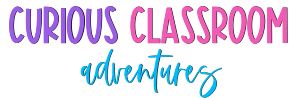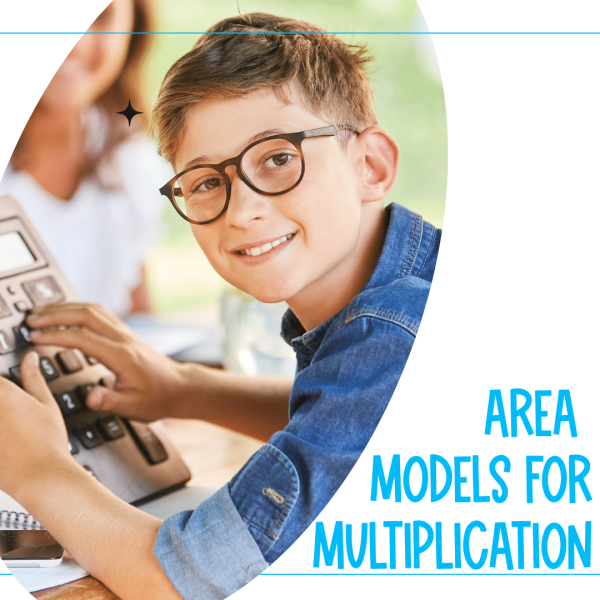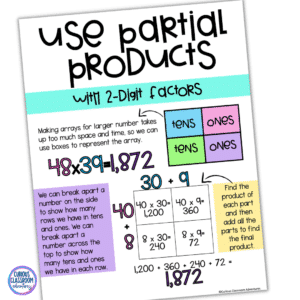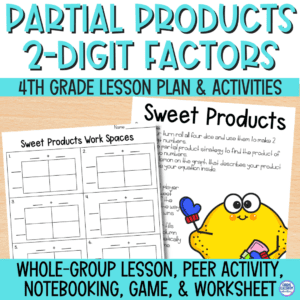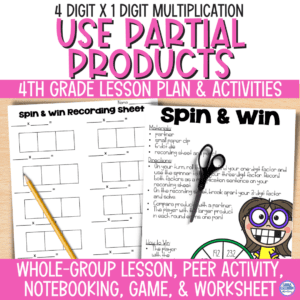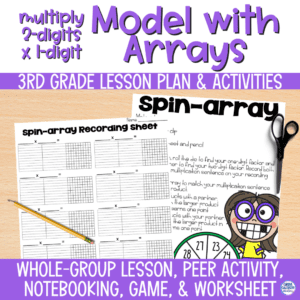I’ll never forget the first time a colleague showed me how to use area models for multiplication (aka partial products) to multiply 2-digit numbers. It seemed so simple and straightforward! And doing a quick lesson with my third graders, proved that it was simple for them too!
Almost every student in the class was able to grasp the concept and apply it. Not only that, they were excited to go home and teach it to their parents (who, of course, followed up with questions about when their child would be learning “real” multiplication, LOL!)
Read on for my explanations, tips, and strategies for teaching students to use area models and partial product multiplication.
What is an Area Model?
Area models for multiplication area visual representation of multiplication sentences. It can be used to represent the product of two whole numbers, two decimal numbers, or two fractions. Area models are especially helpful for understanding the concept of place value in multiplication.
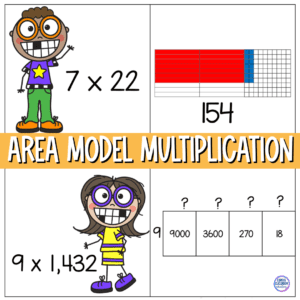
Teaching Area Model Multiplication
To create area models for multiplication, you’ll need a rectangle that is divided into equal parts. The number of parts will depend on the numbers you’re multiplying. For example, if you’re multiplying 25 x 3, you’ll need a 1×2 rectangle; for 25 x 36 you’ll need a 2×2 rectangle. For a true area model the size of each box would proportional to the amount of area represented by the number. The best way to show this is by using arrays, like this one:

For simplicity’s sake, students will quickly move to equal-sized boxes and let the numbers do the heavy lifting of representing place value. Like the example below. You can also grab this anchor chart and several others inside these free 3rd and 4th grade anchor chart samples:
Each part of the rectangle represents the place value of the number being multiplied. Students will write each factor in expanded form to do this.
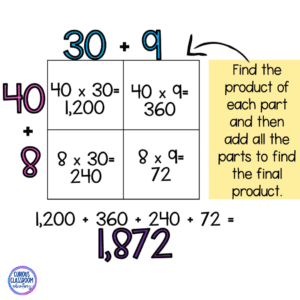
To find the partial products, students will multiply the numbers that line up with each rectangle. This usually comes easily to students since they have recently learned to use a multiplication chart.
Once all the smaller products have been solved, these are called partial products, students will add all the products together to find the total.
Tips and Strategies for Teaching with Area Models
Here are some tips and strategies for teaching with area models:
- Start with small numbers and work your way up to larger numbers. This will help students understand the concept and build their confidence.
- Use real-world examples to illustrate the concept. Your cafeteria tables are usually great examples of larger arrays and multiplication models.
- Give students plenty of practice with finding products using area models. You could create worksheets or have students work in pairs to solve problems together.
- Encourage students to explain their thinking aloud as they solve problems. This will help you gauge their understanding and identify any areas where they may need more support.
- For students who need more visual support, fill the boxes with base ten blocks.
Area models for multiplication are a great way to teach finding the product of 2-digit numbers. Breaking it down like this will make it less overwhelming for your students and more manageable for you as well! I hope these explanations, tips, and strategies will be helpful as you teach your students how to use area models for multiplication! For more math fun grab one of these done-for-you lessons incorporating area models for multiplication that are full of lessons, games, and activities!
